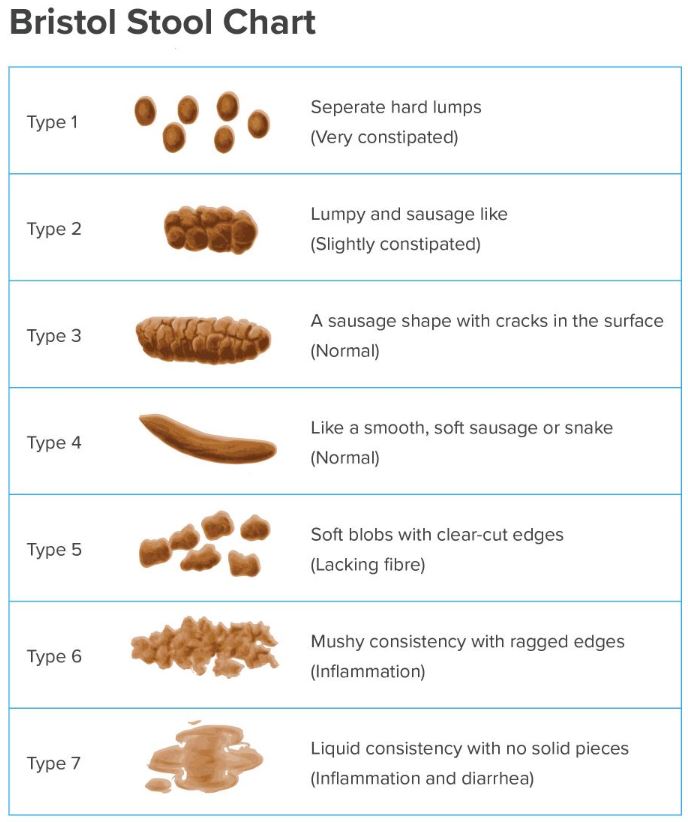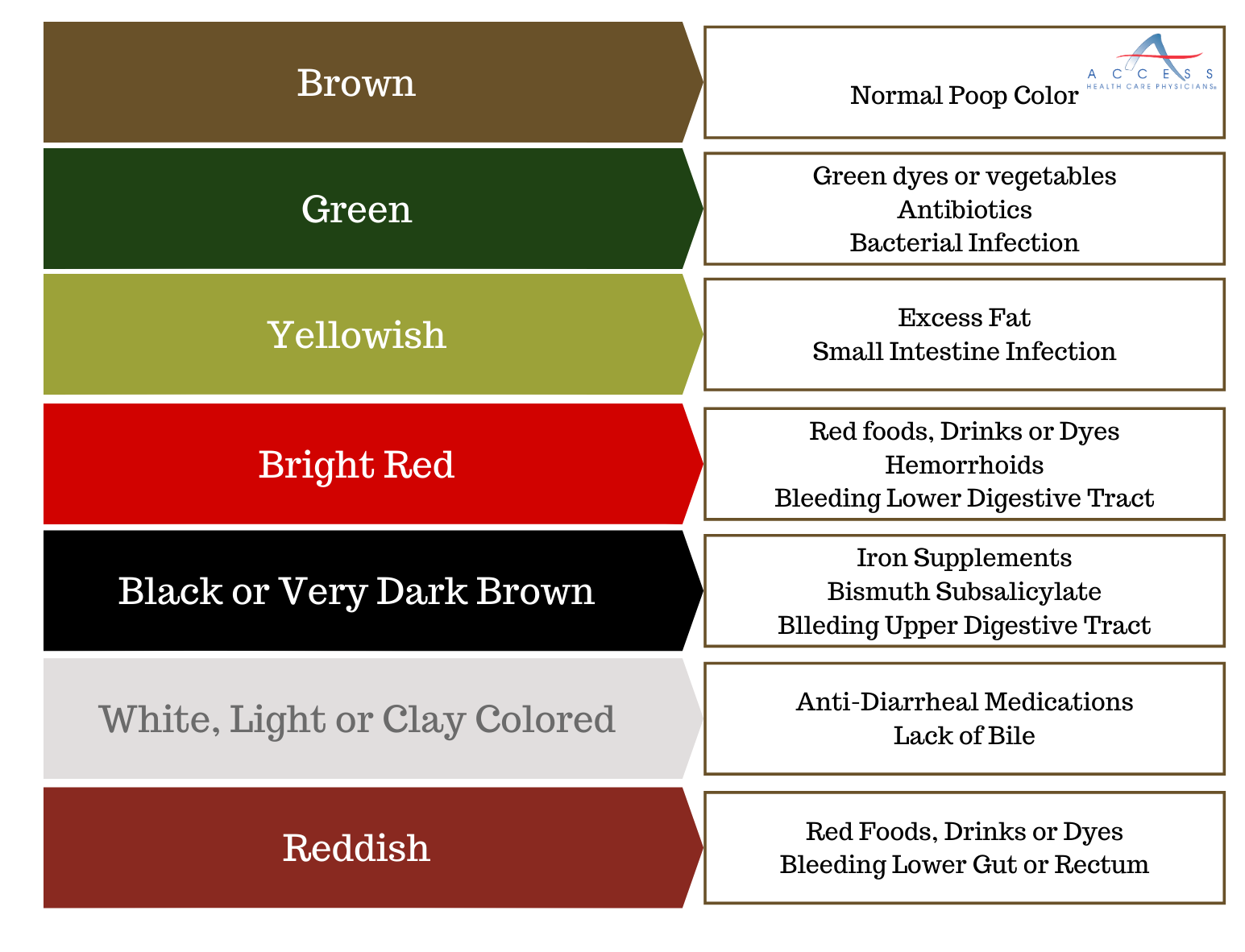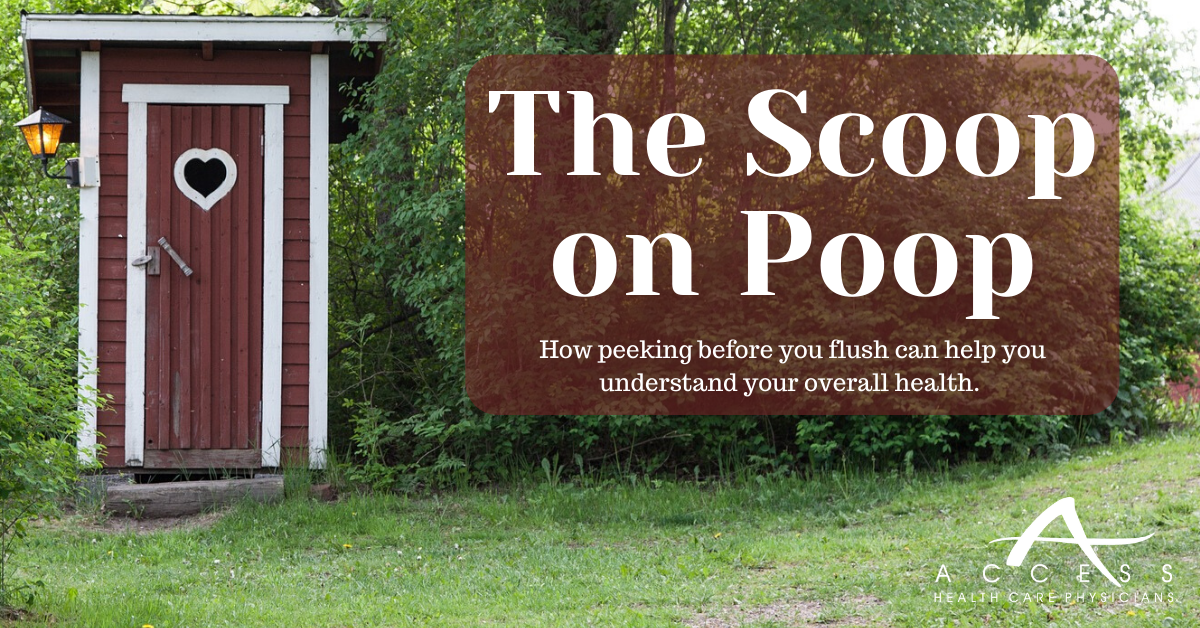Poop. Certainly not the most pleasant of topics, but one that is necessary to discuss and understand. Feces unites the entire animal kingdom as something all animals have in common.
Excrement can be an excellent indicator of overall health as it carries waste away from our bodies. Before we go any further, let's understand poop at the basic level.
What is Poop?
When your body does not break down and absorb some of the food you consume, feces is produced. On average, stool is around 75% water, which can vary greatly. About 25-55% of the fecal matter is made of bacterial biomass. (These include both dead and alive organisms).
The rest is mostly undigested carbohydrates, protein, fiber, fat and dead epithelial cells from the walls of the digestive tract.
In addition, your feces also contains a small amount of metabolic waste products including a substance called stercobilin. This substance is a product of the natural breakdown of red blood cells and bile and is what is responsible for the brown color. But, more on poop colors later.
On average, a human will have a bowel movement 1.2 times every 24 hours. However, there is no such thing as “normal.” Every body is different and people experience different frequencies in bowel movements.
Why Does Poop Smell?
It is in interesting behavioral similarity that we find the smell of poop off-putting. In fact, research has shown that diverse cultures all across the planet respond summarily to the smell of feces (pulling away with recoil and making the familiar disgusted expressions). It is believed that this is a biological protective measure to protect our bodies from the pathogens and bacteria that are often found in feces. Basically, we find it repulsive so that we naturally we keep our distance, keeping us protected.
But, what makes poop smell so bad? Depending on your diet and what is happening within your body (some medical conditions can increase and affect the odor of feces including celiac disease, Crohn’s disease, ulcerative colitis, and cystic fibrosis), the smell of poop can vary person to person. Some of the most common chemicals within the pungent aroma include:
Methyl sulfides – These chemicals are also part of the odor that comes from cabbage as it is cooked.
Indole – This is produced by a number of bacterial species and occurs in coal tar and most surprisingly, flower scents.
Skatole – Like indole, this is also found in flower scents, including orange blossom. It is caused by the breakdown of the amino acid tryptophan.
Hydrogen sulfide – This is what we most commonly relate to the smell of rotten eggs. It is colorless, corrosive, poisonous and flammable.
What is the Correct Consistency of Poop?
While everyone is different, in general, healthy poop will generally have the following characteristics:
Medium to dark brown in color – Again, more on poop colors later, but this is the average normal stool color.
Strong-smelling – As discussed, the bacteria in stool emit gases that cause the odor associated with a bowel movement.
Passed once or twice daily – On average, most people have a bowel movement once a day, although it is common to poop anywhere from every other day to up to three times a day. At a very minimum, a healthy person should pass stool no less than three times per week.
Consistent characteristics – While a “healthy poop” may vary from person to person, you should monitor any changes in the smell, consistency, frequency, and color of your poop. It may be the first sign to indicate a problem. (More on ‘when to speak to your doctor’ later in this article).
Pain-free when passing – A healthy poop should require minimal strain, take less than 10 minutes and should be painless.
Soft to firm in texture – The ideal stool should pass in one piece or a few smaller pieces.
In the chart below, called the Bristol Stool Chart, you will find the most common textures of stools and what they may indicate.

What About Colors?
As we have mentioned, healthy poop should be medium to dark brown in color. Some green is also normal. However, feces can be other colors too. Here is an idea of what those colors may indicate.
Green – Green foods, such as kale and spinach, can cause feces to be more green. However, green poop can also be an indicator of a bacterial infection.
Yellow – Stool that has a yellow coloring or appears greasy may contain too much fat. This could be a result of diet or absorption issues.
Red – This is probably the broadest color in the spectrum of feces. Bright red stools may indicate bleeding in the gastrointestinal tract or from hemorrhoids. However, eating red foods including berries, tomato juice and red dyes may also temporarily turn feces red.
Black – There are a few foods that may lead to black or very dark brown stools. Iron supplements or bismuth medications (medications to treat heartburn, diarrhea and upset stomach), may also contribute to black stools. However, this could also be an indicator of gastrointestinal bleeding.
White – Stools that are white, gray or clay-colored suggest a lack of bile. This could be an issue with the liver or gallbladder. Some medications, including anti-diarrheal, may also lead to white poop.

When Should I See My Doctor?
Feces is a good indicator of overall health and there are a few signs that it may be time to schedule an appointment with your doctor.
- Having a bowel movement less than three times per week.
- Pooping more than three times a day.
- Painful bowel movements or excessive straining.
- Poop that is red, black, green, yellow or white. (Note that if the color change is caused by something you ate, it should not last more than a day or so).
- Blood in stool.
- Greasy or fatty looking poop.
Anytime changes in your stools last more than 2 weeks, schedule an appointment with your doctor. Seek immediate medical treatment if your poop is bright red, black or resembles coffee grounds.
What Can Contribute to Abnormal Bowel Movements?
There are many, many reasons you may experience abnormal stools. Some of the most common may include:
Dehydration – This is often one of the main causes of occasional constipation. Not drinking enough water can cause hard or dry stools that are difficult to pass.
* The recommended intake of water is about 8 glasses (64 ounces) each day. This is especially important if you are increasing your fiber intake.
Stress – Conditions such as irritable bowel syndrome (IBS) and others can be triggered by stress. However, even without these conditions, stress can impact your digestive system causing changes in bowel movements including diarrhea or constipation.
* Be sure to exercise – staying physically active can help your bowels function well and can help reduce stress!
Lack of Fiber – Fiber is the binding substance that helps shape stool. It also assists the body in helping feces move more smoothly through the digestive system. If your diet is too low in dietary fiber, you may experience changes in your bowels.
* The FDA recommends 25 grams of dietary fiber (from food, not supplements) for the average 2,000 calorie diet. Your doctor may have a more specific recommendation for you based on your needs. Dietary fiber can be found in items such as fruits, vegetables, whole grains, legumes, beans, and peas.
Food Allergies or Intolerances – Those with allergy or intolerance to certain foods can experience diarrhea or constipation when they consume the food. We see this often with those who are lactose intolerant or those with celiac disease.
* Try Probiotics – These beneficial bacteria can be taken in supplement form or can be found in some yogurt and cultured drinks.
Some Medical Conditions – Conditions including depression, hyperthyroidism, Parkinson’s disease, cancer or inflammatory bowel disease (IBD), can all cause constipation, diarrhea or other stool abnormalities.
* Magnesium supplements – Magnesium hydroxide can be used to help treat constipation. For most people this is safe, however, speak to your doctor first, as it may not be recommended for all.
Conclusion
While poop may not be the most pleasant topic to talk about, it can be an excellent indicator of your overall health. Ongoing changes in bowels can indicate a larger problem, and can even cause complications such as nutritional deficiencies or bowel obstructions. Know that even if it makes you uncomfortable, your doctor wants to know if you experience changes in stools including color, texture, and frequency. So, be sure to drink plenty of water, eat your fiber and take a peek before flushing to help monitor any changes in your stools.
Written by S. Campbell for Access Health Care Physicians, LLC


